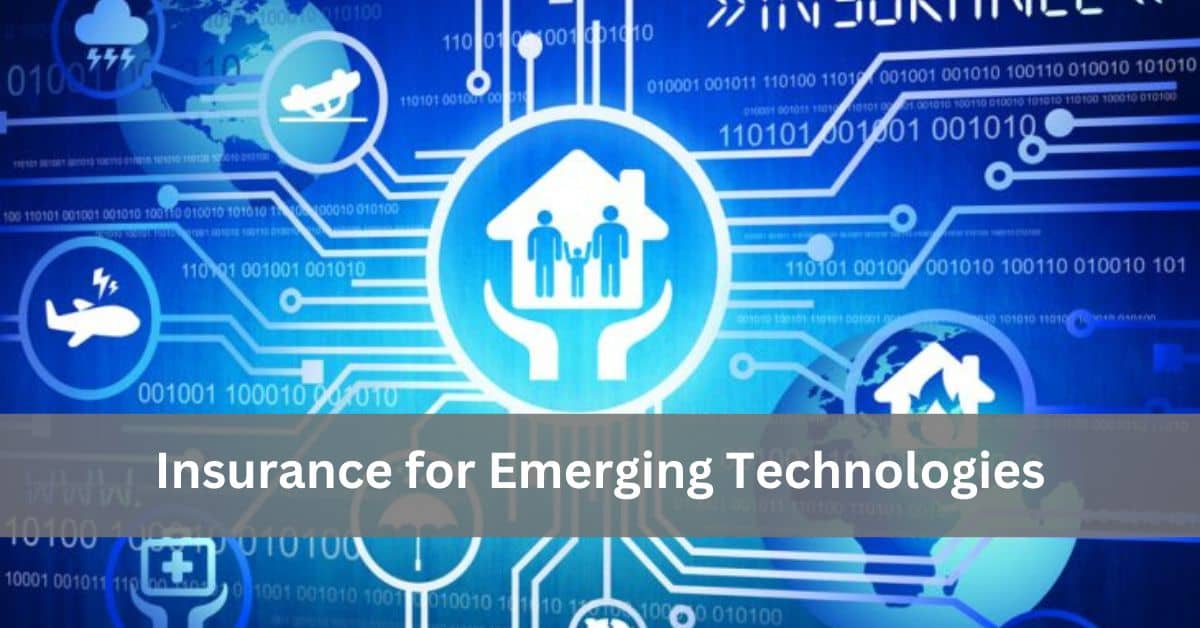Contents
- 1 Introduction to Emerging Technologies
- 2 Understanding the Need for Insurance
- 3 Key Emerging Technologies and Insurance Solutions
- 4 Customizing Insurance for Emerging Technologies
- 5 The Role of Regulatory Bodies
- 6 Future Trends in Insurance for Emerging Technologies
- 7 Conclusion
Introduction to Emerging Technologies
Emerging technologies like artificial intelligence (AI), blockchain, drones, and the Internet of Things (IoT) are transforming industries and creating new opportunities. However, they also bring unique risks and uncertainties. As these technologies evolve, businesses and individuals need insurance solutions tailored to address these new challenges. Insurance for emerging technologies helps mitigate risks, ensuring that innovation can continue safely and securely.
Understanding the Need for Insurance
Rapid Technological Advancements
The rapid pace of technological advancement means that traditional insurance policies may not cover the risks associated with emerging technologies. New risks, such as cyber-attacks, data breaches, and operational failures, require specialized coverage. Insurers need to develop innovative products that cater to the unique needs of businesses and individuals using these technologies.
Increased Cyber Risks
With the proliferation of connected devices and digital systems, cyber risks have increased exponentially. Emerging technologies often rely on vast amounts of data and interconnected systems, making them vulnerable to cyber threats. Cyber insurance policies can protect against data breaches, ransomware attacks, and other cyber incidents, providing financial protection and support for recovery efforts.
Complex Liability Issues
Emerging technologies can create complex liability issues. For example, autonomous vehicles raise questions about who is liable in the event of an accident – the manufacturer, the software developer, or the owner? Insurance policies need to address these complexities, offering coverage that reflects the shared responsibilities and potential liabilities involved.
Key Emerging Technologies and Insurance Solutions
Artificial Intelligence (AI)
Risks Associated with AI
AI systems can malfunction, leading to incorrect decisions or actions. These errors can have significant consequences, especially in critical applications like healthcare, finance, and autonomous vehicles. Additionally, AI systems can be vulnerable to cyber-attacks, where malicious actors manipulate algorithms or exploit vulnerabilities.
Insurance Solutions for AI
Insurance policies for AI technologies should cover potential errors and omissions, cyber threats, and liability issues. Professional liability insurance, also known as errors and omissions (E&O) insurance, can protect businesses against claims resulting from mistakes or failures in AI systems. Cyber insurance can safeguard against data breaches and cyber-attacks targeting AI systems.
Blockchain
Risks Associated with Blockchain
Blockchain technology offers enhanced security and transparency but also presents risks such as coding errors, hacking, and regulatory uncertainties. Smart contracts, which are self-executing contracts with terms directly written into code, can be particularly vulnerable to bugs and exploits.
Insurance Solutions for Blockchain
Blockchain insurance should cover risks related to coding errors, cyber threats, and regulatory compliance. Policies can include coverage for errors in smart contracts, cyber-attacks on blockchain networks, and the legal costs associated with navigating complex regulatory environments.
Drones
Risks Associated with Drones
Drones are used in various industries, from agriculture to logistics, but they come with risks such as collisions, technical failures, and privacy violations. Accidents involving drones can cause property damage, bodily injury, and data breaches.
Insurance Solutions for Drones
Drone insurance typically includes coverage for physical damage, third-party liability, and privacy breaches. Physical damage coverage protects against accidents and technical failures. Third-party liability coverage addresses damages or injuries caused by drones. Privacy breach coverage protects against claims resulting from unauthorized data capture or surveillance.
Internet of Things (IoT)
Risks Associated with IoT
IoT devices are interconnected and collect vast amounts of data, making them attractive targets for cyber-attacks. Risks include data breaches, operational failures, and privacy violations. The complexity and diversity of IoT ecosystems can also lead to interoperability issues and system vulnerabilities.
Insurance Solutions for IoT
IoT insurance should cover cyber risks, data breaches, and operational failures. Cyber insurance can protect against attacks targeting IoT devices and networks. Data breach insurance covers the costs associated with notifying affected parties and recovering from a breach. Operational failure insurance addresses losses resulting from device malfunctions or connectivity issues.
Customizing Insurance for Emerging Technologies
Risk Assessment
Effective insurance for emerging technologies begins with a thorough risk assessment. Insurers need to understand the specific risks associated with each technology and how they impact businesses and individuals. This involves evaluating the technology’s use cases, potential vulnerabilities, and regulatory environment.
Tailored Coverage
One-size-fits-all insurance policies are insufficient for emerging technologies. Insurers must develop tailored coverage that addresses the unique risks and needs of each technology. This may involve creating specialized endorsements or riders that can be added to existing policies or designing entirely new products.
Continuous Adaptation
The landscape of emerging technologies is constantly evolving, and insurance policies must adapt accordingly. Insurers need to stay informed about technological advancements and emerging risks. Regular policy reviews and updates ensure that coverage remains relevant and comprehensive.
Collaboration with Technology Experts
Insurers should collaborate with technology experts to develop effective insurance solutions. This collaboration helps insurers understand the intricacies of emerging technologies and create policies that accurately reflect the associated risks. Working with experts also ensures that insurers can provide informed guidance to their clients.
The Role of Regulatory Bodies
Ensuring Compliance
Regulatory bodies play a crucial role in shaping the insurance landscape for emerging technologies. They establish standards and guidelines that insurers must follow, ensuring that policies are fair, transparent, and effective. Compliance with these regulations is essential for maintaining trust and protecting policyholders.
Promoting Innovation
Regulators also have a role in promoting innovation within the insurance industry. By fostering a supportive environment for the development of new insurance products, they can help ensure that emerging technologies are adequately covered. This involves balancing the need for regulation with the need to encourage experimentation and growth.
Addressing Legal Challenges
Emerging technologies often present new legal challenges that regulators must address. This includes clarifying liability issues, establishing guidelines for data privacy and security, and ensuring that insurance policies meet the needs of policyholders. Regulators must work closely with insurers and technology developers to navigate these challenges effectively.
Future Trends in Insurance for Emerging Technologies
Increased Demand for Cyber Insurance
As cyber risks continue to grow, the demand for cyber insurance is expected to rise. Businesses and individuals will seek comprehensive coverage to protect against data breaches, ransomware attacks, and other cyber threats. Insurers will need to develop more sophisticated policies that address the evolving nature of cyber risks.
Development of Parametric Insurance
Parametric insurance, which pays out based on predefined triggers rather than actual losses, is gaining traction in the context of emerging technologies. This type of insurance can provide quick and efficient payouts for specific events, such as natural disasters or cyber-attacks, reducing the administrative burden and speeding up recovery.
Integration of AI in Insurance
AI is not only a risk to be insured against but also a tool that can enhance the insurance industry. Insurers are increasingly using AI to improve risk assessment, streamline claims processing, and personalize insurance products. The integration of AI can lead to more accurate pricing, faster settlements, and better customer service.
Expansion of Peer-to-Peer Insurance
Peer-to-peer (P2P) insurance, where groups of individuals pool their resources to cover risks, is expected to expand with the help of blockchain technology. P2P insurance can offer lower costs and greater transparency, making it an attractive option for insuring emerging technologies.
Conclusion
As emerging technologies reshape industries and introduce new risks, insurance must evolve to provide adequate protection. Customized insurance solutions for AI, blockchain, drones, and IoT devices are essential for mitigating risks and supporting innovation. By conducting thorough risk assessments, tailoring coverage, and collaborating with technology experts, insurers can develop effective policies that address the unique challenges of these technologies. As the landscape continues to evolve, staying informed and adaptable will be crucial for insurers to meet the needs of their clients in the age of emerging technologies.




